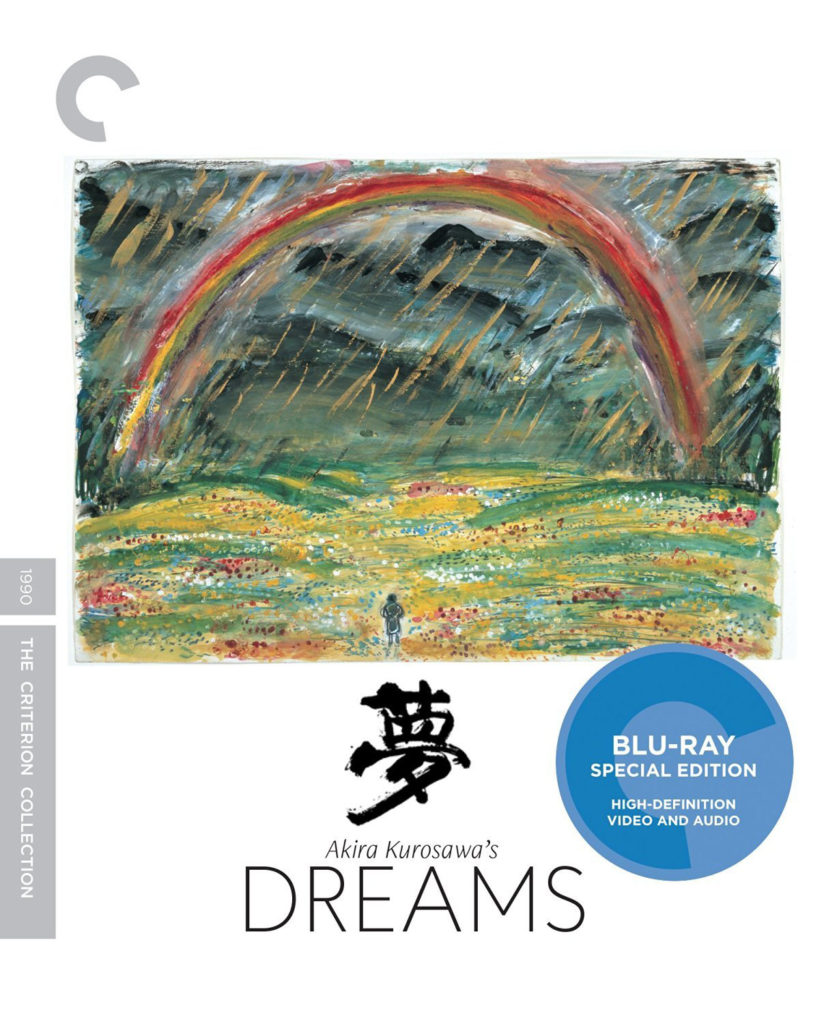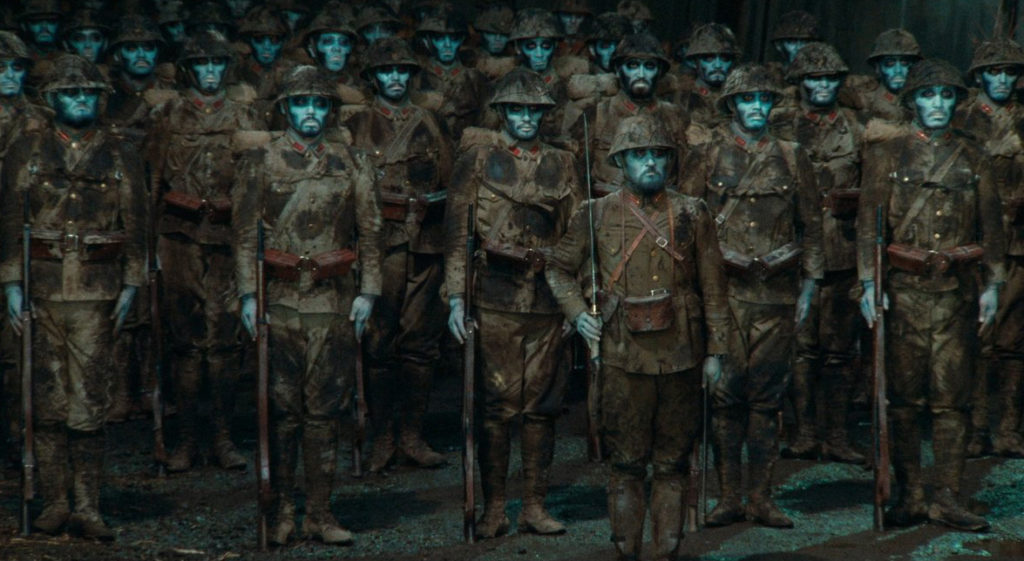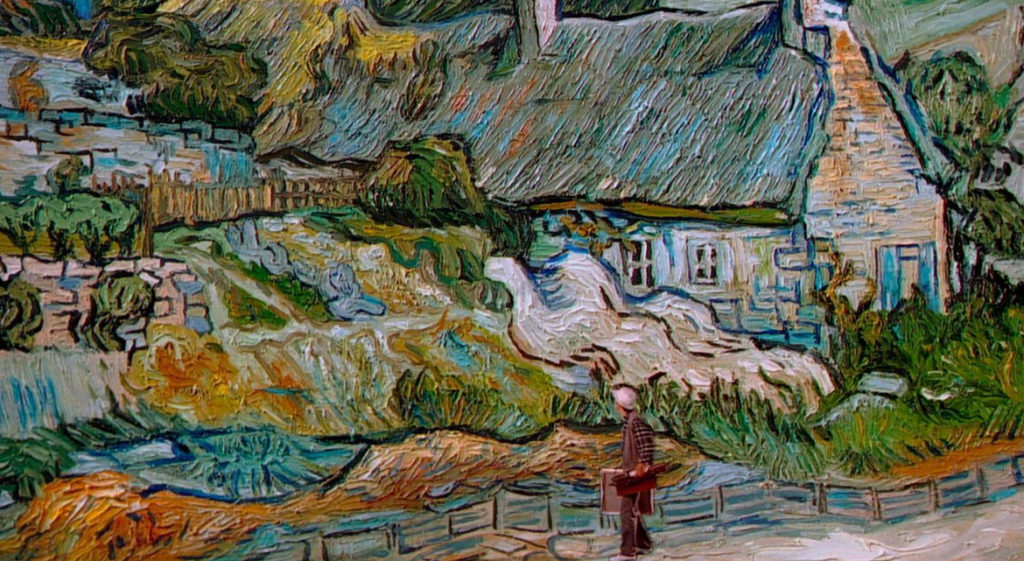Writer: Akira Kurosawa
Cast: Mieko Harada, Hisashi Igawa, Martin Scorsese
Cert: PG
Running time: 119mins
Year: 2016
Film: 
Extras: ![]()
What’s the story: Across eight vignettes, including fantastical tales of Japanese folklore and dark apocalyptic visions, director Akira Kurosawa reveals his dreams.
What’s the verdict: Those who remember Akira Kurosawa’s Dreams’ release in 1990 but are only now catching up with the film itself are due for a pleasant surprise.
Originally met with a mixed response (it still holds a 55% Rotten Tomatoes rating), to modern eyes Dreams is a burst of sunshine through the current blizzard of smeary CGI pseudo-spectacle.
Split into eight separate stories, each introduced by a title and the legend “I had another dream…”, Kurosawa spirits us away into the wonderland of his imagination.
Sunshine Through the Rain and The Peach Orchard takes the audience back to Kurosawa’s childhood with the stories of a boy who spies upon a fox wedding after a heavy downpour (that’s when foxes prefer their nuptials) and another young lad who witnesses the spirits of felled peach tress perform one final blossom for him.
Rich in local tradition and superstition these stories, shot in rural locations by regular Kurosawa cinematographers Takao Saitô and Shôji Ueda, are literally breathtaking in their beauty.
The Blizzard, a tale of four mountaineers wrestling with death after becoming lost in a fierce storm, is a stunning depiction of gods buffeting humankind. Largely wordless, it is a masterclass in how sound effects and simple shots of the human face can be used to powerful effect.
With its studio based setting The Blizzard resembles a 1960s Japanese movie, as does The Tunnel, a war guilt story about a captain confronted by ghosts of his slain platoon. While striking and enigmatic, it is hamstrung by the recurring notion of victimhood that blights many Japanese accounts of World War 2 (and which would cause controversy in Kurosawa’s next film, Rhapsody in August).
Crows takes a Japanese artist into the past to meet his hero Vincent Van Gogh (Martin Scorsese, adding to the bizarre dream texture of the vignette). Having characters interact with Van Gogh’s paintings (assisted by Industrial Light and Magic’s FX), accompanied by a piano score recalls the wonder and creativity of silent cinema.
Matters turn darker in Mt. Fuji in Red and The Weeping Demon. Kurosawa (a staunch critic of nuclear power) imagines a world laid to waste by nuclear disaster that poisons the earth and transforms people into demons. Referencing Masaki Kobayashi’s anti-war epic The Human Condition, The Weeping Demon sees Kurosawa in full on pessimistic mood.
But, The Village of the Watermills is a delightful paean to the pleasures of village life and life itself, and may have influenced the ending of 2016’s Kubo and the Two Strings.
Living up to its title, Dreams has the look and feel of a particularly vivid dream state. Stories often begin midway through the action or end without resolution. Working from a script he penned solo for the first time in his career, the director is chiefly interested in mood and emotion, Japanese tradition, the power of nature and man’s place in the world.
Strongest in the first hour, the second hour loses momentum, proof that going dark is not always best. The Weeping Demon adds little Mt. Fuji in Red had not already conveyed and you wish the director had included a reportedly cut scene in which newscasters report a sudden outbreak of world peace.
But twenty-six years on, the film, funded by Warner Bros under the patronage of producer Steven Spielberg, is a reminder that wonder and spectacle can sometimes be found when closing your eyes… or taking a good look at the world around you.
Picture: The Criterion Collection long ago established itself as the premiere DVD and Blu-ray label for Kurosawa’s movies. But this Blu-ray, transferred from a 4K restoration overseen by cinematographer Shôji Ueda, is a showroom example of how to present a film.
Despite the age and location photography, the saturated colours and detail in every frame are stellar achievements. The spirit dance in The Peach Orchard should be the scene with which everyone test runs an HD TV.
Extras: The Blu-ray transfer is such a triumph Criterion could have released Akira Kurosawa’s Dreams barebones and it would still be a must-purchase.
But, following great past work done on Rashomon, Kagemusha, Ran and more, the label has included extras that further enrich the film.
Criterion Kurosawa audio commentary regular Stephen Prince delivers a typically scholarly though engrossing talk track, analysing the film, its production and that point in Kurosawa’s career.
The 150 minute Making of “Dreams” (30 minutes longer than the film itself) was directed by Nobuhiko Obayashi, who had previously helmed the bizarre horror favourite House. Allowed extensive access, Obayashi’s movie is a fascinating document of the world class director during the late phase of his career, and stands alongside Chris Marker’s Ran documentary A.K. as one of the great records of making a movie.
In the 2011 documentary Kurosawa’s Way, Kurosawa longtime translator Catherine Cadou gathers interviews with filmic dignitaries including Martin Scorsese, Clint Eastwood, Alejandro G. Inarritu, Bong Joon-ho, Julie Taymor and Shinya Tsukamoto to deliver their opinions on the cinematic giant.
Add in interviews with assistant director Takashi Koizumi and production manager Teruyo Nogami, plus a trailer and booklet featuring Kurosawa’s script for the never filmed ninth dream (not included with the press Blu-ray) and you have the stuff which dreams are made of.
Rob Daniel
Twitter: rob_a_Daniel
Like this review? Try out The Electric Shadows Podcast available now for subscription on iTunes or here.
[youtube id=”bPHsu5NaVfM”]





